The Carnival of Venice is without a doubt the world’s most illustrious party.
It has a centuries-old history behind its back, unique public events, splendid masquerade balls, and traditions that have influenced carnival celebrations in many different countries.
It’s not surprising then that visiting the Carnival of Venice is a lifelong dream for many.
Finding yourself in the city of water in the midst of Carnevale is a beautiful experience indeed. With its theatrical location at the heart of the Venetian Lagoon, Venice is the perfect stage set.

Groups of people dressed in lavish imaginative costumes and with faces concealed behind traditional Venetian masks perch at Venice’s most iconic spots. Standing still and communicating just with gestures they add a fairytale quality to the city which in itself is already out of this world.
All throughout the Carnival of Venice, public parades and historic events take place. At the centre of it all is the iconic St. Mark’s Square. The large stage erected there reflects the specially selected Carnival theme which changes every year. It’s on this stage that the culmination of all public Carnevale celebrations is achieved.
This is where the Twelve Maries stand on after walking all across Venice just as they did back in the 10th century. And this is where the Angel of the Venetian Carnival steps on after her exhilarating flight down from the top of the 99 meters high St. Mark’s Bell Tower.
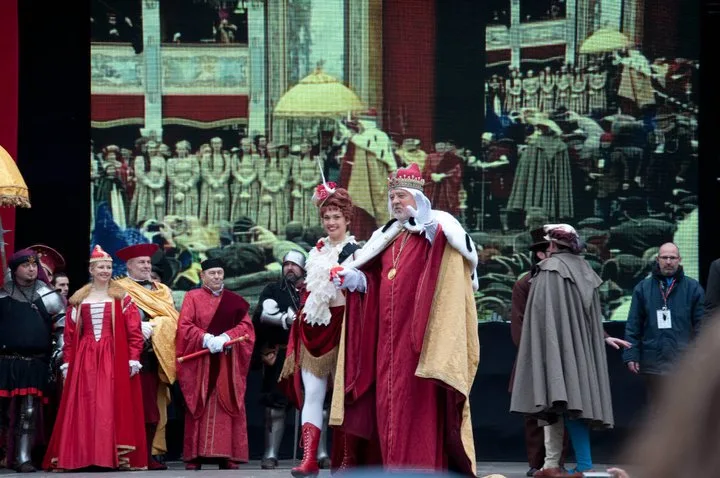
I had long wanted to experience the Carnival of Venice for myself. The idea of all this visual beauty and deep historic roots was indeed very appealing to me. The first chance that I got, I headed there. It was a drizzly February in 2011 and since then I have returned as often as possible so as to experience il Carnevale di Venezia again and again.
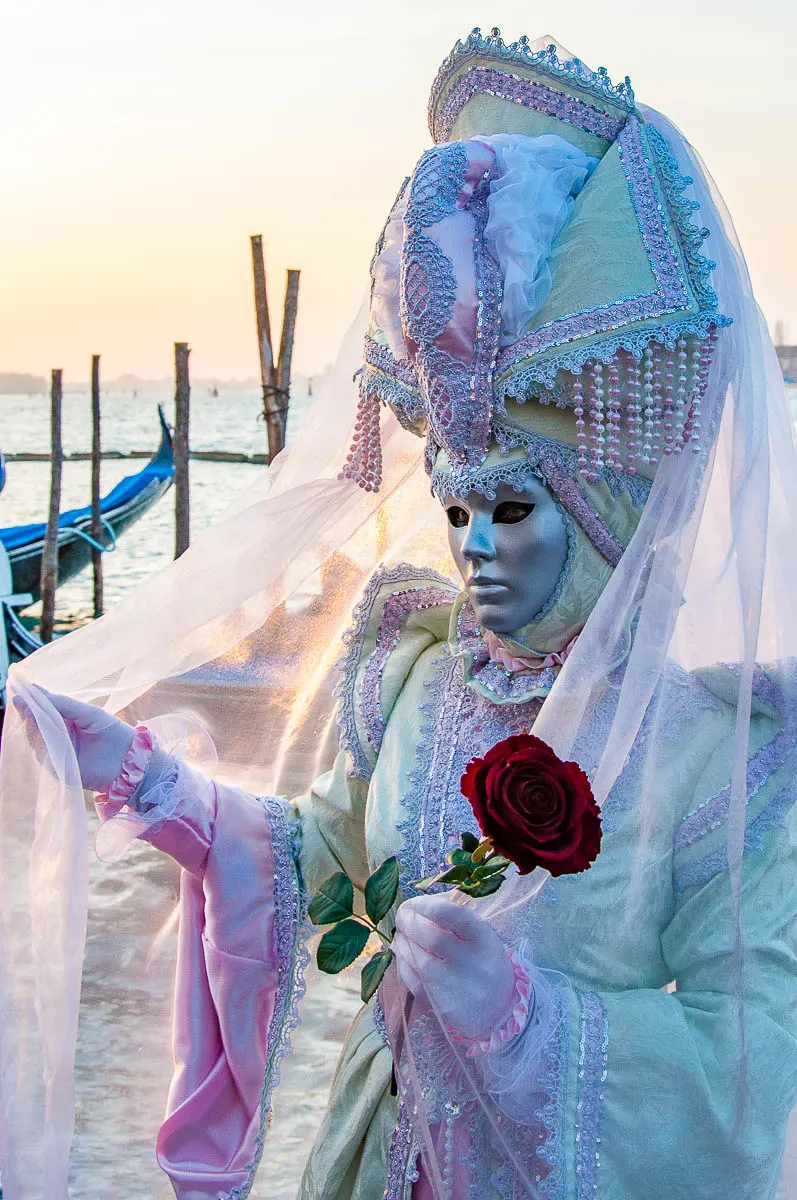
So, in this blog post today, I want to share with you some curious facts about the Carnival of Venice. Delving deep into the history and the traditions of this large-scale event, I will also cover topics such as:
- What is the purpose of the Carnival in Venice?
- What happens at Venice Carnival? and
- Why do they wear masks in Venice during Carnevale?
I hope that you will find the information provided both interesting and useful.
Now, put a Venetian mask on (an imaginary one if you don’t have the real thing) and have a look!
Carnival of Venice – History and Traditions of the World’s Most Illustrious Party
1. The Carnival of Venice Is Almost One Thousand Years Old
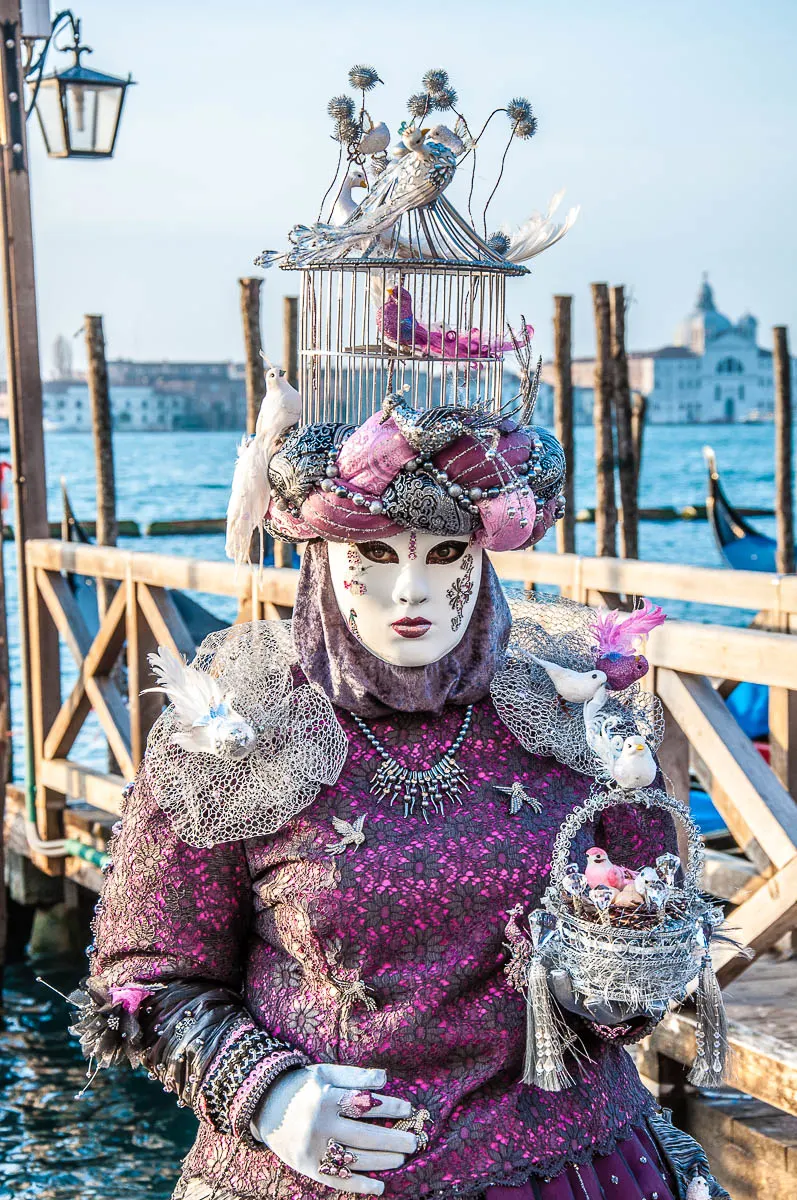
Getting together in the cold months of winter to let loose and have raucous fun is a tradition as old as the world. The ancient Greek and Roman civilisations had their own winter festivals when people sort of lost control and indulged in the pleasures of the flesh.
Bacchanalia, Saturnalia, and Lupercalia are some of the names of these ancient wild celebrations. Their practices dripped through the centuries and influenced in one way or another the medieval cultures on the Old Continent, eventually crystalising in what we nowadays know as the Carnival.
Great banquets and amusements have been organised in Venice in the last days before Lent since at least the end of the 10th century. Still, the documented story of the Carnival of Venice starts in 1094. This is when the Venetian Doge Vitale Falier signed the first document that has reached us where the precursor of the word Carnival – laxatio carnis – is mentioned.
By the mid-13th century, Carnival had become a staple in Venetian life. Originally, it lasted from St. Stephen’s Day on 26th December to Shrove Tuesday. It was a period when everyone could conceal his identity behind a mask and give himself with wild abandon to the task of having fun. More than a celebration, Carnival in Venice was a state of mind. In disguise, everyone was equal and everyone could be anyone.
With a mask on, the nobility could avoid scrutiny while the populace – traditionally deprived of participation in the Venetian Republic’s political life – could enjoy the illusion of being empowered.
In the centuries that followed, the Carnival of Venice grew in popularity and the Carnival celebrations became ever more lavish and eccentric. Soon, its fame spread all over Europe and people started to travel to the city of water to see this wondrous festival for themselves.
It all came to an end in 1797 when Napoleon Bonaparte conquered the Serenissima Republic of Venice. He abolished the public celebration of Carnival and forbade the wearing of masks outside. While private masquerade balls kept being organised with some regularity, the Venetian Carnival as a city-wide community event had reached the end of its life.
2. The Carnival of Venice Got A Second Lease of Life
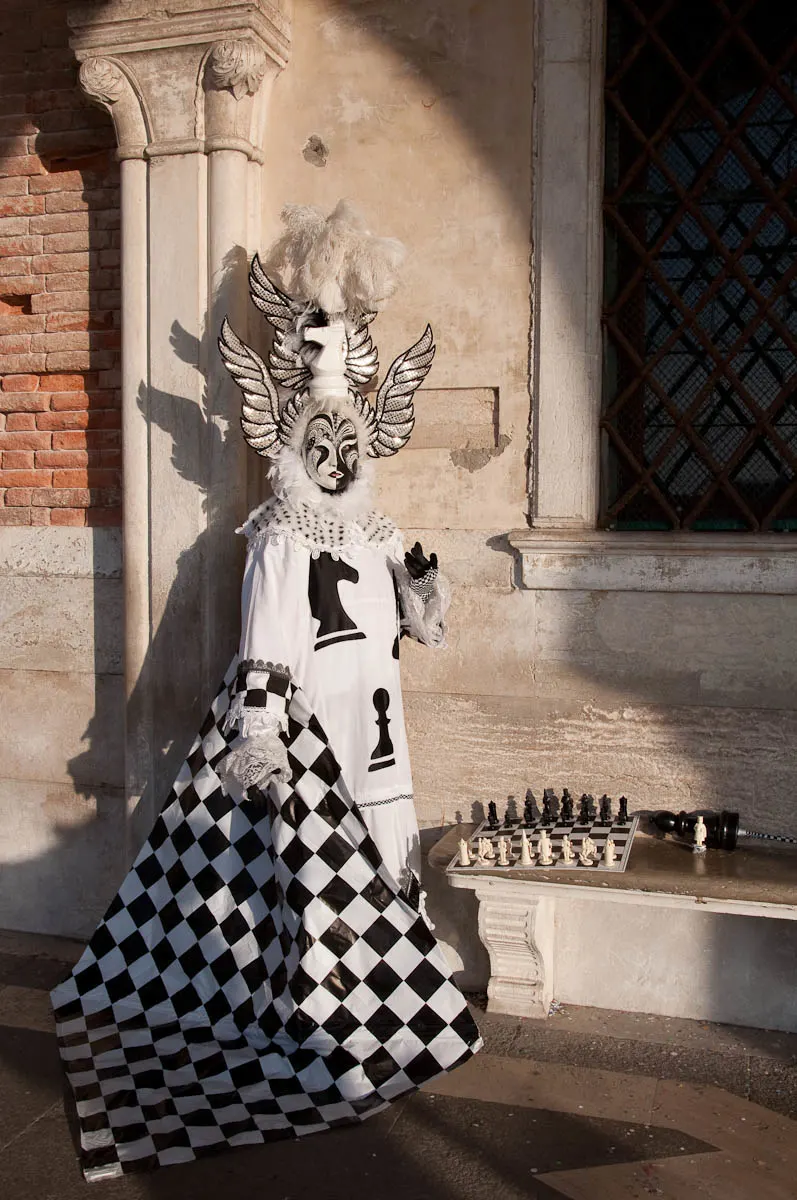
In the two centuries that followed Napoleon’s conquest of Venice, many attempts were made to revive the traditions and the public events of the Historic Venetian Carnival. They didn’t succeed but here are two of the most curious efforts:
- In 1867, a Carnival celebration took place at St. Mark’s Square and at La Fenice Opera House. It was organised by a group of locals dreaming to reclaim the glory of Venice. So, there was a Carnival parade culminating with the burning at the stake of a large effigy of King Carnival. A host of illustrious guests attended the event. Among them were the Italian patriot and revolutionary Giuseppe Garibaldi and Prince Amedeo – the son of the Italian King Vittorio Emmanuele II and future King of Spain.
- In 1933, the National Recreation Club – the fascist organisation controlling the leisure activities of Italian adults – made another effort to revive the Venetian Carnival. Although the wearing of masks had been forbidden after the First World War, masks were temporarily allowed for the event.
It was only in 1979 and 1980 that the Carnival of Venice once again became a firm fixture on the Venetian calendar. Spurred by repeated efforts to revive it in the 1960’s and the 1970’s, the Venetians took it upon themselves to give it a new lease of life. For the 1979 edition, for example, there was a rowing competition, a theatrical performance, and a grand ball on St. Mark’s Square. The highlight was the burning on the stake of an effigy of Pantalone – the Venetian character in Commedia dell’Arte who is known as Pantaloon in English.
Pantalone’s name is a corruption of the phrase pianta leone – literally ‘lion-planting’ or ‘lion-placing’. It refers to the practice of erecting a statue of the Venetian winged lion on top of a tall pillar on the main piazza of all towns that were annexed to the Republic of Venice by means of force or diplomacy. The practice was made fun of by the other Italian states and soon a new character was introduced in the Italian improvisational theatre – Commedia dell’Arte – representing an old miser. Dressed in red, with a black cloak and a crooked nose Pantalone was a merchant and a caricature of the Venetians.
Nowadays, the Carnival of Venice is one of the world’s most well-known and splendid events. Every year, it attracts more than a million people to the city of water. On the days with the main Carnival events, there could easily be more than 150,000 visitors in the historic centre of Venice – about three times the number of permanent residents. The narrow streets easily become bottlenecks and the crowds can be stuck there for hours. All in all, it’s the blight of an otherwise splendid experience.
There is quite a clear distinction between the old and the new Carnival of Venice. The one held between the 11th and the 18th centuries is traditionally referred to as the Historic Carnival or the Carnival of the Serenissima (using the moniker of the Republic of Venice). The modern-day one is known as Carnevale Moderno which is self-explanatory.
3. They Call It Carnival Because…
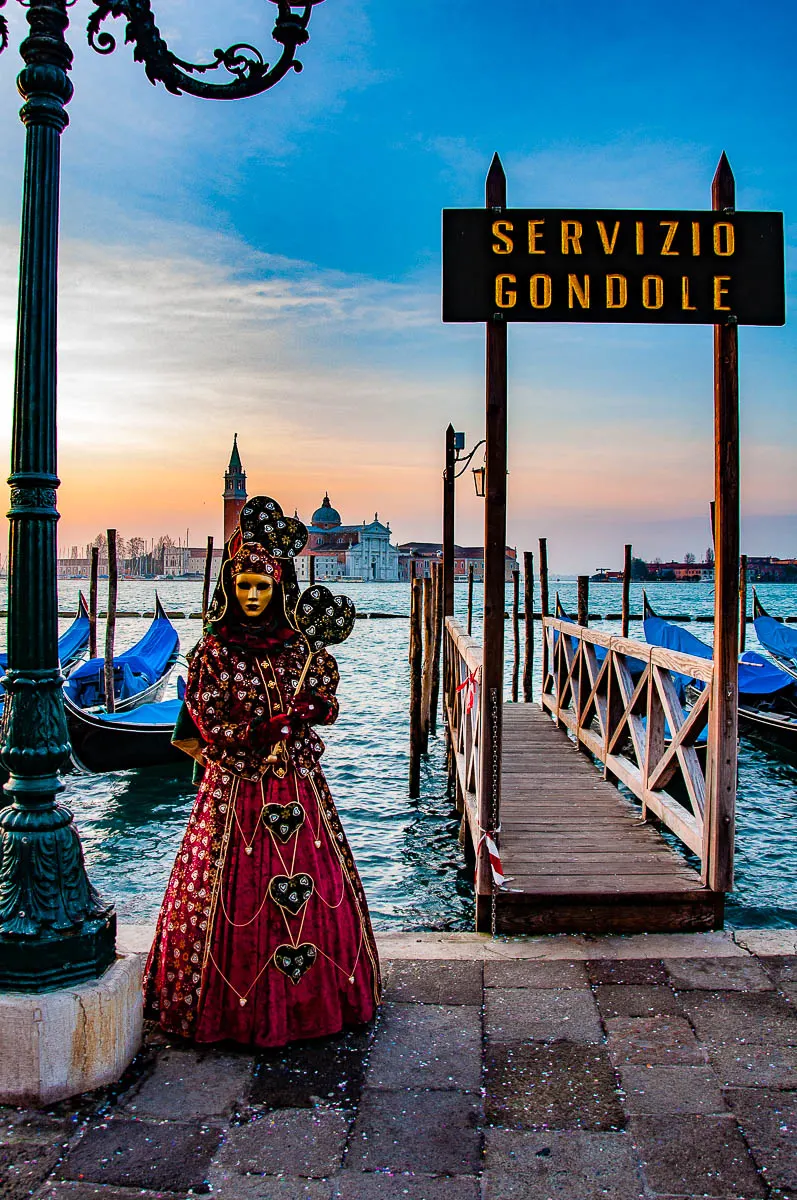
Carnival is the large exuberant festival that precedes the straight-laced period of Lent.
Lent requires people to give up meat and all other pleasures of the flesh albeit it culinary or carnal. In the past, when Lent was strictly observed by all, Carnival in a way served as a period of mental and physical preparation for the deprivations ahead. One last hurrah or getting it out of your system before you had to pray, fast, and repent over forty days.
There are many different opinions about the etymology of the word Carnival. The most widely accepted ones rely on this juxtaposition of excess and restraint. As a linguist myself, I found it very interesting to trace the different potential explanations. Here is a summary:
- Carnival as a contraption of carnis laxatio and carnem levare – Both phrases are Latin in origin and mean ‘to leave meat’ and ‘to put meat away’. Considering that the term carnis laxatio is the one used in the first Venetian document mentioning Carnival that has reached us, this seems to be the most likely etymology. Carnis laxatio originally contracted to carnasciale – nowadays an outdated term for Carnival in the Italian language. Carnem levare gave rise to carnelevarium, carnilevaria, carnilevamen, and eventually to carnovale (nowadays outdated) and carnelevale as early as 1130. As a side note, some prefer to interpret carnem as ‘flesh’ (as in the body) rather than ‘meat’ (as in the food) and levare as ‘raise’ or ‘lift up’. As such, carnem levare may imply the carnal pleasures that were very much the order of the day during the Carnival period. For example, the great Italian poet and scholar Giovanni Bocaccio – famous above all for writing the Decameron – apparently, often used the word carnelevare to refer to the male erection.
- Carnival as a contraption of carrus navalis – from an ancient Roman religious festival honouring the Egyptian goddess Isis. It was held on 5th March and included a procession (which some see as a precursor to Carnival parades). An integral part of it was to carry a model of a ship called carrus navalis from the local Isis temple to the sea or a nearby river. A contracted carrus navalis forms Carnavale quite neatly, so this is an interesting theory to know and consider about the provenance of the term.
4. The Carnival of Venice Used to Last Months
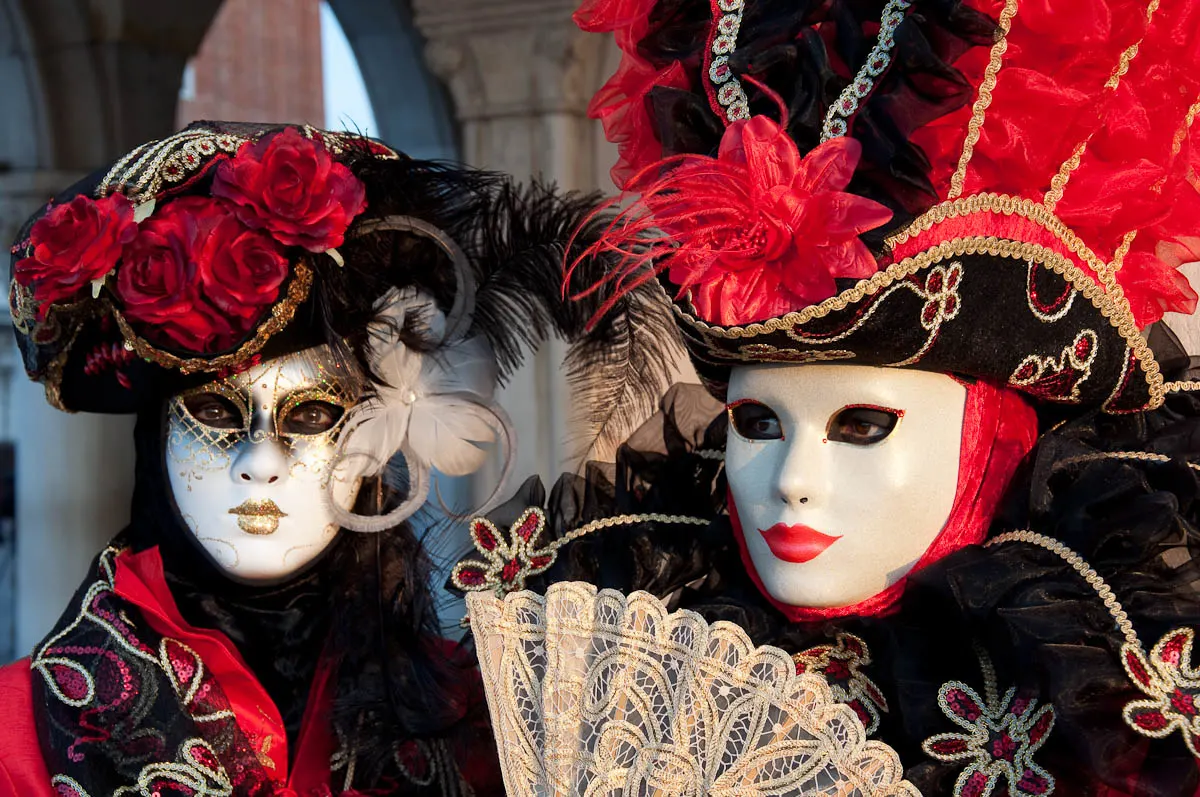
The Modern Carnival of Venice lasts on average two and a half weeks. The main public events are spread throughout this period with the most important ones being:
- Opening night of the Venetian Carnival. This is when a large water parade takes place on Rio di Cannaregio – one of the main canals in Venice. It is a beautiful spectacle with lavishly decorated barges and boats on which acrobats perform gravity-defying acts. The event attracts incredibly large crowds to the point of being difficult to move around.
- Festa delle Marie – usually on the Saturday before Shrove Thursday;
- Flight of the Angel – usually on the Sunday before Shrove Thursday;
- Flight of the Eagle – usually on the last Sunday of Carnival;
- Flight of the Lion – on the last day of Carnival; and
- Silent Regatta – on the last night of the Venetian Carnival. This is when the electricity along the Grand Canal is switched off and the lavish palaces there are illuminated with thousands of lit candles. Boats draped in black with crews in black then silently glide down the Grand Canal thus symbolising the end of the madness of Carnival and the return to the daily grind.
All throughout the duration of the Carnival of Venice, there are also masked balls, opera performances, treasure hunts, best mask competitions, a children’s carnival, and many other public and private events.
Phew! That’s a lot! It’s not surprising that they need on average 18 days to do it all.
In the past though, the Carnival of Venice used to be even longer! For example, in 1989 it lasted a month. And back in the 11th-12th centuries, it would start on the Day of St. Stephen on 26th December and go on until Shrove Tuesday. In the centuries that followed, Carnival grew and grew in length.
At one point, it started when the opera houses and the theatres of Venice opened their doors in October, then broke off for Christmas and resumed after Epiphany to last until Shrove Tuesday.
Then, again, masks could be worn at several other times during the year. Not just for reasons of fun but to also provide discretion and anonymity.
5. Masks Are At the Heart of the Venetian Carnival

For many centuries, the Historic Carnival of Venice provided easy access to liberty and equality which were guaranteed by the wearing of masks.
Behind the mask, everyone could be anyone and everyone commanded equal respect. Buongiorno, Siora Maschera! – ‘Good Day, Ms Mask!’ – was the standard greeting addressed to a person wearing a mask as he could be a man or a woman, a pauper or a prince.
As the great social equaliser, the mask gave freedom and helped avoid scrutiny.
The Modern Carnival of Venice upholds the custom of wearing a mask. Nowadays, Venetian masks are predominantly a symbol of beauty and mystery. Handmade and sumptuously decorated, you will find them in artisan shops all around town.
A big portion of the experience of being at the Venetian Carnival is the visual delight of seeing all the masked people standing at different iconic spots.
From St. Mark’s Square to the Church of San Zaccaria, from Cafe’ Florian to numerous small squares, beautiful maschere – as these people are known – pose for endless photos hidden completely behind elaborate costumes and full-face masks.
They don’t accept payment for posing in public places and come from all over the world. Usually, there are many French, German, and Italian people between them. Many return year after year, each time with an even more splendid costume than the previous Carnival. Often, it has taken them the better part of a year to come up with the idea for it and to make it themselves.
Personally, for me, these maschere are the true spirit of the Modern Venetian Carnival. I admire the dream that they hold of a beautiful, fairytale Venice. I marvel at the extremes to which they go to design and make a unique costume. I am always astounded by their patience to stand still while surrounded by thousands of people clamouring for a picture with them.
Seeing them makes you want to have a Venetian mask for yourself. Something sumptuous and totally impractical to take home from Venice with you. Something that will bring beauty in your life even on the greyest of days.
It’s quite lucky then that the ancient craft of mask making has been revived in Venice over the last four decades. Nowadays, there are several artisan mask makers in the city of water. Visiting their shops is like finding yourself in a magical world.
If you want to buy your own Venetian mask either to wear or to decorate your home with, then, have a look at this extensive blog post. It gives you all the practical information you need to make the perfect choice:
6. Nothing Stops the Carnival of Venice Unless It’s Cancelled
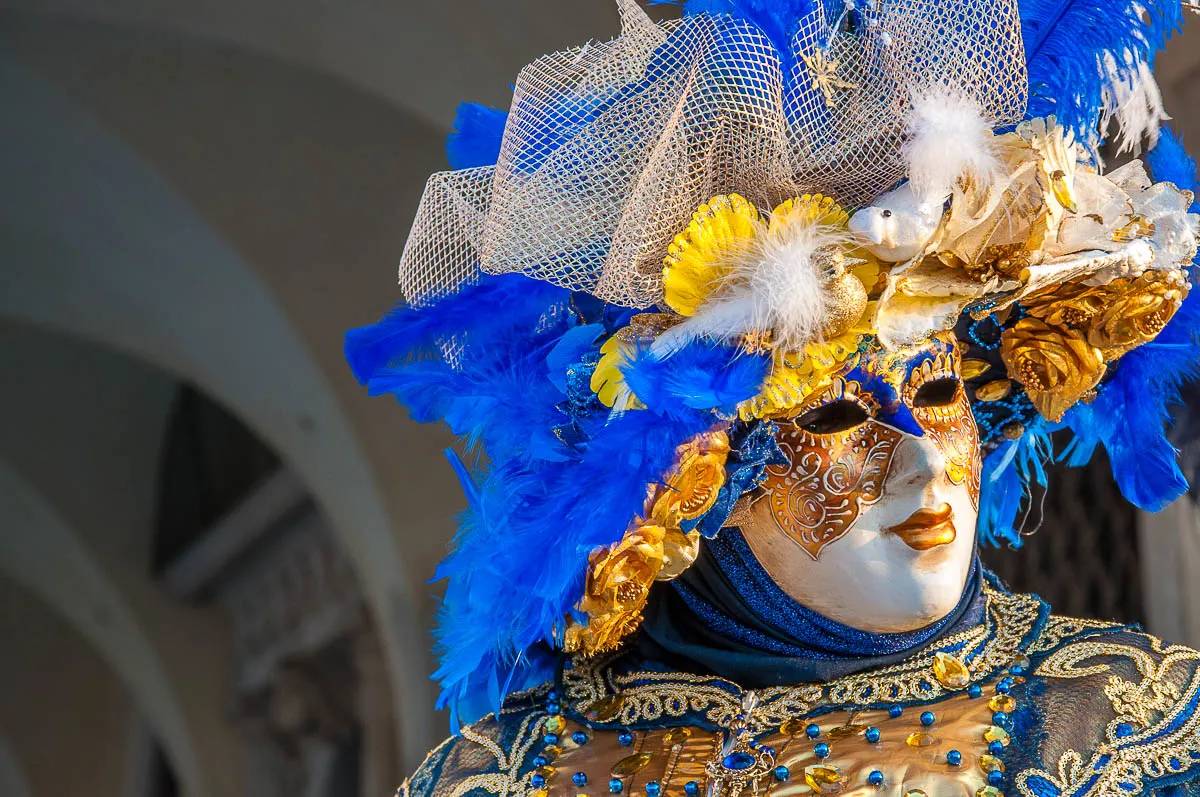
There is an old Venetian saying that goes like this: Il Carnevale non puo’ essere interrotto.
It basically means that the Carnival of Venice cannot be interrupted no matter what. In the past, the Venetians went to extremes in order not to interfere in any way with the progress of Carnival. To the point that in 1789, when Doge Paolo Renier died on 13th February in the middle of the Carnival, his passing was made public news only on the 2nd March after the celebrations had come to an end.
Unfortunately, when in 1797 Napoleon Bonaparte conquered Venice he didn’t hesitate to commit the greatest transgression – he actually cancelled all public Carnival events and banned masks to be worn outside.
Since the Carnival’s revival in 1979, it has been running smoothly unless you consider the following instances:
- In 1991, the Carnival of Venice was cancelled because of the Gulf War.
- In 2013, the public events of the Carnival of Venice were suspended for a day due to the heavy snowfall that had befallen Venice that February. The snow was followed by an exceptionally high acqua alta, too.
- In 2020, the Carnival of Venice was cancelled with two days left to its end due to the escalating Covid-19.
It remains to be seen what is going to happen now in 2021. In principle, the Carnival’s public events should start on 31st of January and last until the 16th of February. At the time of writing this blog post, there is a website which has already announced the Carnival programme for 2021 whereas other official websites so far have simply stated that the programme will be defined on the basis of the Covid-19 emergency trend.
In any case, it would be completely understandable if the Carnival’s public events don’t go ahead this year.
7. Before Confetti They Used to Throw Perfume-Filled Eggshells at the Venetian Carnival
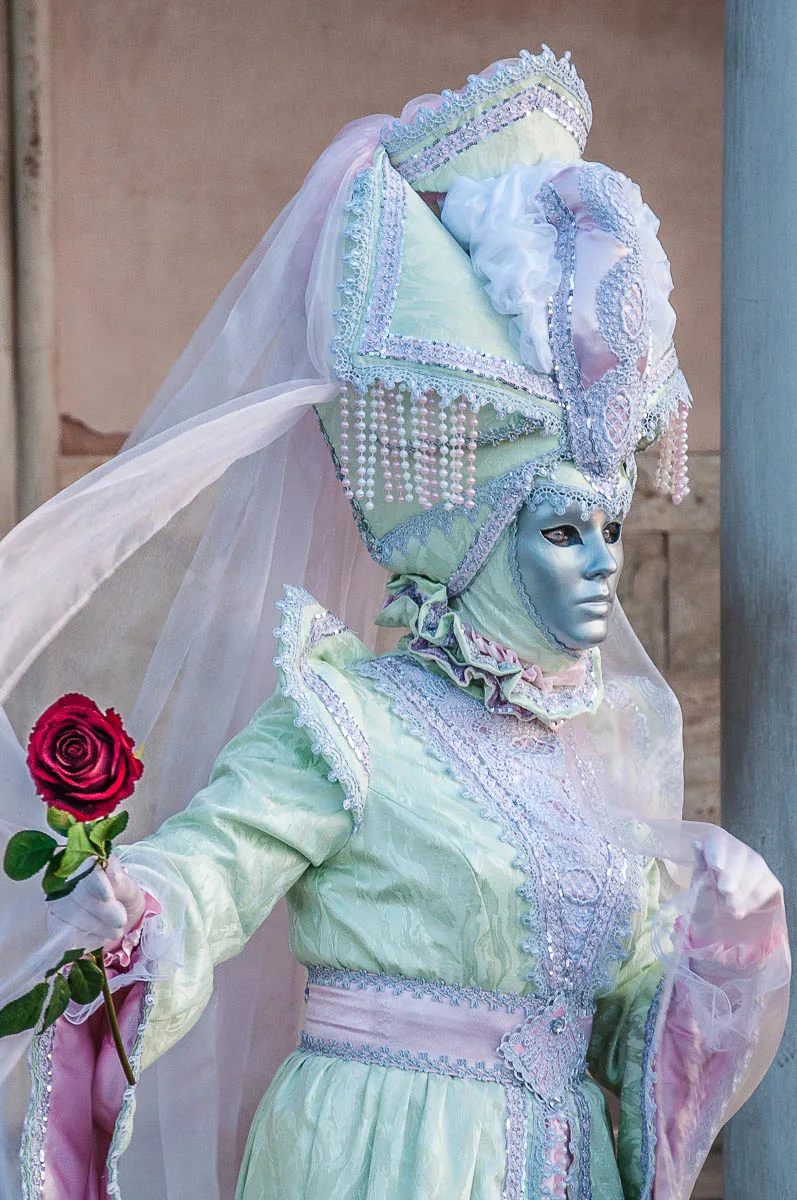
Throwing confetti with wild abandon is one of the great delights of celebrating the Carnival in Italy in general and Venice in particular. You simply haven’t lived until you have thrown handfuls of colourful tiny pieces of paper at strangers around you while they are doing the same to you.
It unlocks something very primaeval. It removes the fear of being silly in public and it makes you join full-heartedly in the fun.
Nowadays, big bags of confetti in different sizes are sold everywhere for the duration of the Carnival in Italy. At some Carnival events, they even employ confetti cannons! Puff! And you get covered in the tiny itchy things! Only to start grabbing at the confetti in your own bag and throw them thus spreading joy and cheer around.
Well, many centuries before confetti were invented, the Venetians used to throw something else at their Carnival. Namely, perfume-filled eggshells!
Apparently, this was a great flirting technique. For example, if you fancied a certain lady, you could throw rosewater-filled eggshell at her!
However, some Venetian miscreants hidden behind a mask decided that they could throw eggshells filled with ink instead. Not at the ladies of their heart, I hope! This soon became a public hazard and the Venetian Senate had to intervene.
So, a new law was voted in expressly forbidding anyone wearing a mask to throw eggshells! This happened in 1268, by the way! A long, long time ago but the lesson stuck!
In 1979, when the Carnival of Venice was revived, a special ordinance was passed in advance to prevent history from repeating itself. The ordinance forbade the throwing of flour, eggs, and other projectiles by the Carnival celebrants.
Instead, paper confetti (called coriandoli in Italian) took off and to this day they are the most popular and cheapest way to celebrate during the days of Carnival in Venice.
8. The Carnival of Venice Used to Revel in Some Rather Bloodthirsty Entertainment
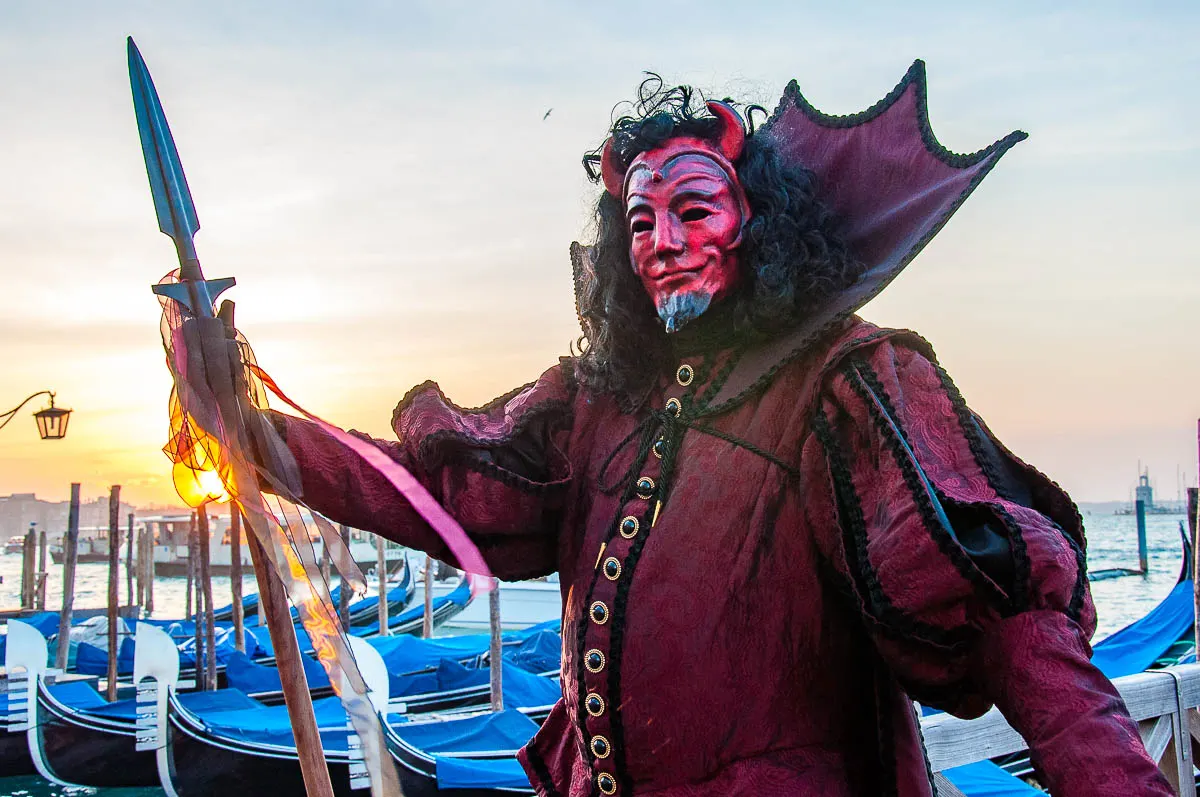
Eccentric events and historical reenactments have been the staple of the Carnival of Venice since its inception. Here is a short overview!
In the past, while Carnival lasted between six weeks and several months, traditionally, the main Carnival celebrations took place on Fat Thursday. The focus of all events and performances was Piazzetta San Marco. This is the small but splendid extension that juts out of the majestic St. Mark’s Square.
Nowadays, Piazzetta San Marco is flanked by the pink and white Doge’s Palace on one side and the solemn Sansovino Library on the other. At the start of the Historic Venetian Carnival though it was more of a market place with shacks selling meat and salami there.
Still, for Carnival, they would clear out the square. The Doge would position himself on the small balcony which you can still see on the facade of the Doge’s Palace. The dignitaries and nobility of Venice would stand in a specially erected tribune.
Among the main acts stood out:
- The slaughtering of twelve pigs and a bull – This was done year after year and reenacted an important for Venice historic event. In 1162 the city of water had fought against the patriarchal city of Aquileia (nowadays a town with lots of Roman and early Christian ruins in the northeastern Italian region of Friuli Venezia Giulia). Venetians were victorious and captured the city’s patriarch and his twelve cannons. They brought them to Venice and to humiliate them, the doge dispatched them back to Aquileia commanding them to send back twelve pigs and one bull in their place. The animals were tried in the Ducal court, sentenced to death and slaughtered. Then the dignitaries of Venice entertained themselves by destroying wooden models of the castles and fortifications that were allies to Aquileia. The practice of beheading the animals with one clean strike in the midst of the Carnival celebrations survived more or less until the middle of the 16th century. This is when the Venetian society started favouring more refined forms of entertainment.
- A military dance called moresca – it was performed with daggers or wooden sticks by the workers in Venice’s shipyard Arsenale.
- Forze d’Ercole (in English, Hercules’ Labours) – these were acrobats forming human pyramids which seemingly defied the laws of gravity and were very popular. Many other balance games were performed, too. Some would require that a person stood with his feet on two gondolas and then held up to three people on his shoulders and his head.
In addition, at different spots around the city, you could also see fistfights. These were held on bridges with no railings so that the losing party would end in the cold waters of the canals.
Especially popular were the fights between the warring family clans of the Castellani and the Nicolotti. They lived on the opposite sides of the Grand Canal and the tensions between them started even before their ancestors had moved to the islands in the Venetian Lagoon to escape the Barbarian Invasions on the mainland.
The Ponte dei Pugni (literally, Bridge of Fists) in the Venetian sestiere of Dorsoduro is where some of the most ferocious battles took place. Nowadays, you can see on the bridge the marks where the warring men had to place their feet while waiting for the signal to start the fistfight.
Ox hunts held at different spots around Venice were another popular Carnival event. The oxen were incited and dangerously agitated. Then a pack of dogs was set upon them. The aim was for the dogs to shred to tears the ears of the bulls. The bloodshed would excite the spectators and be perceived as a symbol of fertility. Hence the oxen – wounded and heavily bleeding – would be presented to the maidens of Venice. It was a reference to their future weddings with the hope that they would produce the male heirs to upheld and increase the glory of the Serenissima Republic of Venice.
9. The Carnival of Venice Sends an Angel Flying Down a Steel Rope
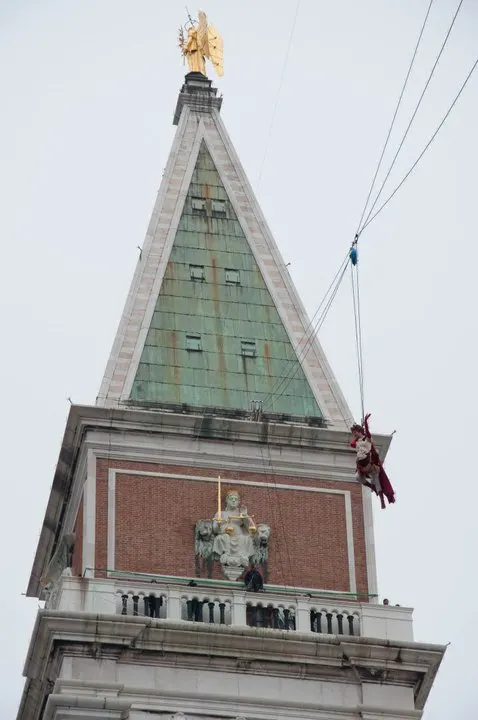
The Volo dell’Angelo (in English, Flight of the Angel) is without a doubt the absolute highlight of the Modern Carnival of Venice.
This is when a beautiful girl is suspended from a steel line and then slides slowly and graciously between the top of the 99 metres high St. Mark’s Bell Tower to the main Carnival stage at St. Mark’s Square. It’s breathtaking to watch and thousands of people flock to see it to the point that the square becomes a huge sea of faces looking upwards.
This daredevil performance has its origins in the Volo del Turco – a tightrope act performed at the Historic Carnival of Venice since 1558. In it, an acrobat walked from the top of the same bell tower to a boat anchored in the water lapping the Piazzetta San Marco. The act owes its name to the fact that the first tightrope walker to attempt it was Turkish.
Historic sources also state that sometimes, the Volo was performed by a child sitting in a basket. The basket was then lowered down a pulley from the bell tower to the balcony of the Doge’s Palace. Once safely arrived, the child would present the Doge with a poem and flowers.
They say that the acrobat performing the Volo del Turco was secured by rings to the cord. At some point, he started wearing a pair of wings, too. However, in 1759, the acrobat tragically fell to his death. From then onwards and until the end of the Historic Carnival in 1797, Venetians resorted to using a wooden dove to glide down the rope while releasing flowers and candy over the crowd below.
With the start of the Modern Carnival of Venice, the tradition was revived. Nowadays, it is performed by a beautiful girl safely attached to the steel rope. The girl is dressed in a splendid costume reflecting the Carnival theme which changes every year.
The Flight of the Angel quickly became such a popular event that a second flight was introduced in recent years. It’s known as the Flight of the Eagle and it’s performed by a famous Italian personality on the last Sunday before the end of Carnevale.
There is also a third flight performed down the steel rope. Called the Flight of the Lion it takes place on the last day of the Carnival. This is when a huge Venetian flag is slowly lowered from the top of St. Mark’s bell tower to the Carnival stage thus symbolising the end of yet another Carnival.
10. The Carnival of Venice Gave Us the Word for Marionettes
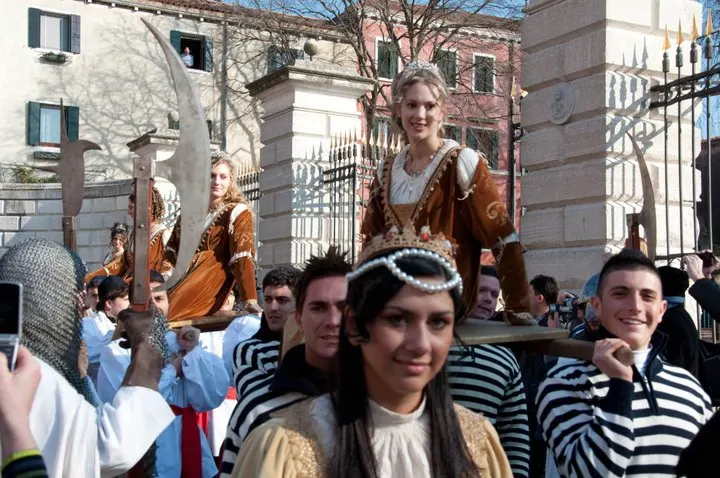
While string puppets have been around for millennia, many claim that it was the Carnival of Venice that gave us a name for them: Marionettes!
If you look at the programme of the Modern Carnival, you will notice that the Festa delle Marie is one of the central events on it. This is when twelve of the most beautiful girls from the islands in the Venetian Lagoon walk from the Basilica of San Pietro in the sestiere of Castello all the way to St. Mark’s Square. It’s a big and splendid parade. Along the way , the girls are carried on large wooden boards supported on the shoulders of young and strapping Venetian men.
The event’s historic roots pre-date those of the Venetian Carnival. Back in 943, twelve girls were kidnapped from the Basilica of San Pietro by Istrian pirates. The girls were from the poorest families in Venice and the Doge had gifted them lavish dowries and jewels to make it possible for them to marry. Accompanied by their families and the Venetian nobility, the girls were at the Basilica of San Pietro to take part in a mass in celebration of the Purification of the Virgin Mary.
When the pirates grabbed the girls and their dowries, the Venetians pursued them relentlessly. They reached the pirates near the small town of Caorle on the Adriatic coast, killed them and threw their bodies in the sea. Then, they returned victorious to Venice bringing back the twelve girls and the stolen riches.
Since then, the Feast of the Twelve Maries was celebrated with great pomp for centuries. The feast took place between the 31st January and the 2nd February which coincided with the Day of the Purification of the Virgin Mary.
With the advent of the Venetian Carnival, the Feast of the Twelve Maries was absorbed in it and soon became one of the main Carnival events. Each year, twelve poor girls were chosen to be gifted dowry and jewels by the Doge. Afterwards, they took part in a parade through the streets of Venice and feasted at the Doge’s Palace.
In 1349, a decision was taken to replace the girls with wooden dolls. Apparently, it was felt that the Feast of the Maries had become more of an occasion to meet the girls up close and personal rather than a celebration of the glory of Venice and the Purification of the Virgin Mary.
Venetians, outraged by the change, soon took it upon themselves to throw eggs, rotten fruit and vegetables onto the wooden dolls. The event soon lost its veneer of respectability and was suppressed in the second half of the 14th century. Although the feast stopped being celebrated, it left us a linguistic reference. They say that the word marionette was inspired by the wooden dolls that stood in for the Twelve Maries.
With the re-birth of the Modern Carnival of Venice, the Feast of the Twelve Maries has been restored, too. The event is a bit like a beauty pageant inspired in the Middle Ages. Girls from all around the Venetian Lagoon apply to take part. The chosen Twelve Maries then spent the Carnival period taking part in many different events and masked balls. At the end of Carnevale, one of them is coronated a winner. Her biggest prize is that she becomes the Angel who flies down from the top of St. Mark’s Bell Tower during the following year’s edition of the Carnival of Venice.
11. The Carnival of Venice Has A Sweet Tooth
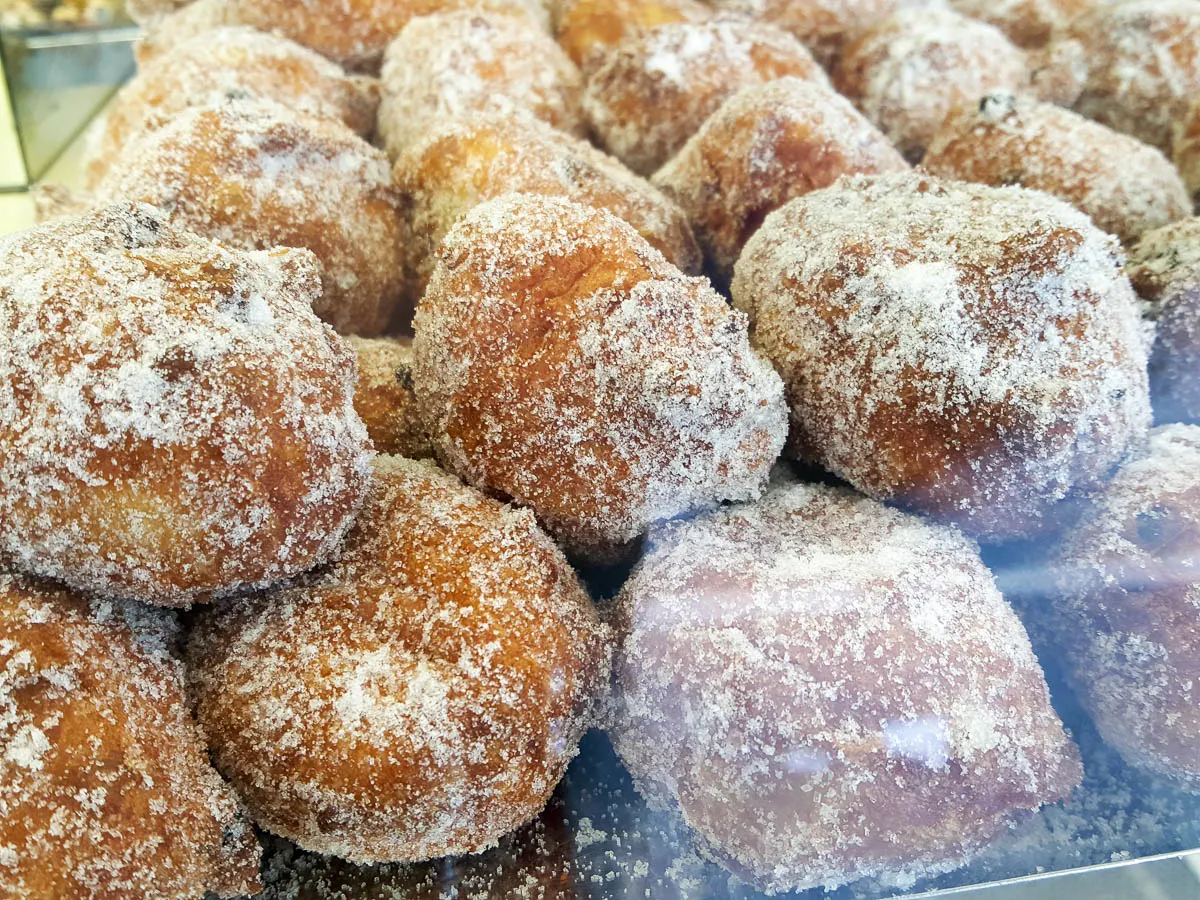
You cannot come to the Carnival of Venice and not taste its traditional sweets. Just like Carnevale they also have a long and illustrious history that spanns several centuries back in time.
You will find the Carnival sweets sold in every self-respecting patisserie and cafe in Venice. Don’t be shy! Help yourself to a second and a third one!
Here they are in all their fried and sugary glory, the traditional sweets of the Venetian Carnival:
- Frittella – imagine a ball of perfectly fried chewy dough that is beautifully dusted with sugar which has half-melted into the crust. This is the traditional Venetian frittella that makes you fall in love with it at first bite. Carnival frittelle can be simply studded with juicy raisins and crumbly pinenuts. Or stuffed with thick creme patisserie, lavish chocolate spread, sinful zabaione or a very popular in Venice creme chantilly. Not to be missed!
- Galani (also known as Crostoli) – these are thin and fragile strips of dough that have been deep-fried in very hot oil and then dusted with icing sugar. They have a very delicate taste and tend to crumble lots but are strangely addictive.
- Favette (also known as Castagnole) – these are small fried balls made of butter, sugar, and eggs. They can be either plain or stuffed with creme patisserie. They are very easy to eat a whole bowl of. You start with one and then you pick another one and then before you know it, they are all gone.
12. The Carnival of Venice is Not the Only One in the Venetian Lagoon

Carnival is a big celebration all over Italy. And while the Carnival of Venice is one of the largest and most well-known Carnivals in the world, Venice is not the only place with a Carnival in the Venetian Lagoon.
For a smaller and some would say more authentic celebration head to the islands of Lido, Murano, and Burano. The locals there stage their own events with masquerades and parades with paper-mache figures.
In fact, the Carnival on Burano precedes the modern-day one in Venice. While efforts were made to revive the Carnival of Venice, all the way through the 1970’s Burano celebrated its own Carnival and even inspired the resurgence of a Carnival on the island of Murano.
In Conclusion
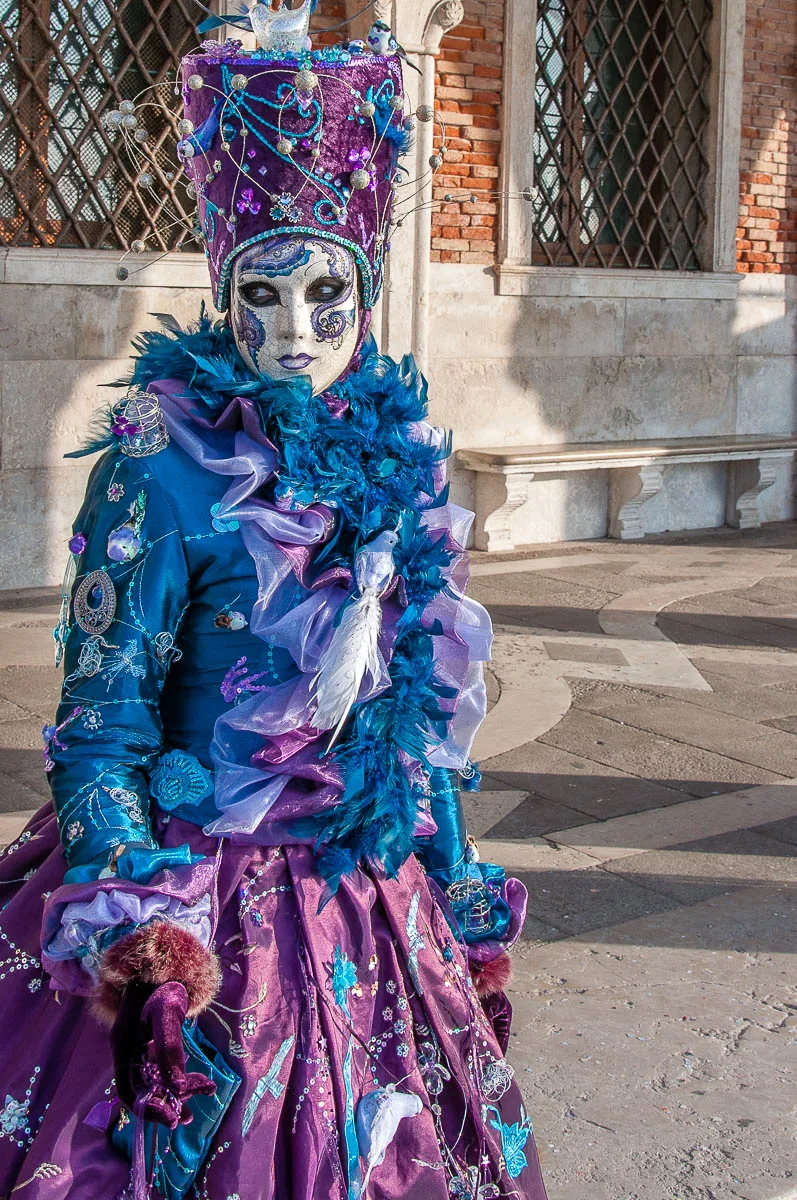
The Carnival of Venice is one of the world’s most famous Carnival celebrations. With a thousand-year-old history behind its back, it is a lavish festival with many public events inspired by ancient traditions.
The above blog post lifts the veil over the history and the traditions of the Carnival of Venice. It also provides you with an outline of the most important public events that take place during the Modern Carnival of Venice.
I hope that you enjoyed reading it!
While I don’t have a connection in any capacity with the Carnival of Venice apart from being a long-life admirer of the event, my interest in history and traditions and my memories of spending time at the public Carnival events spurred me to write this blog post. My hope is that the more people know about the past, the better they are prepared to enjoy the present and to make use of every opportunity that presents itself to them, albeit an opportunity to travel to the Carnival in Venice as and when this is safely possible again.
At present and with everything that happened in 2020, we don’t know exactly how the Carnival in Venice is going to progress. Yet, it’s always interesting to look back on what happened in the past. As if there is a lesson to be learned from it is that everything eventually passes but traditions that have developed over many centuries always find a way to resurface in people’s minds and intentions for the future.
Here is looking forward to many future editions of the Carnival of Venice one way or another!
More Helpful Links
- Venetian Masks – 10 Things to Know Before You Buy
- Hidden Gems in Venice – 101 Things to Do in Venice, Italy Off the Beaten Track
- Venice, Italy – 15 Weird and Wonderful Types of Boats You Can Only See in La Serenissima
- Arco del Paradiso – Finding Paradise in the Sestiere of Castello, Venice
- Exploring Venice – Rialto Fish Market
- Exploring Venice – Moretta – The Mute Mask
- 11 of the Best Day Trips from Venice (With Lots of Photos, Travel Times and Italy Train Tips)
- Video of Ca’ Macana – A Renowned Venetian Mask Maker and Mask Shop
Thank you for reading! Please, leave me a comment, pin the image below or use the buttons right at the top and at the end of this blog post to share it on social media.
For more useful information like this, please, like my blog’s page on Facebook and subscribe to my strictly no-spam newsletter.
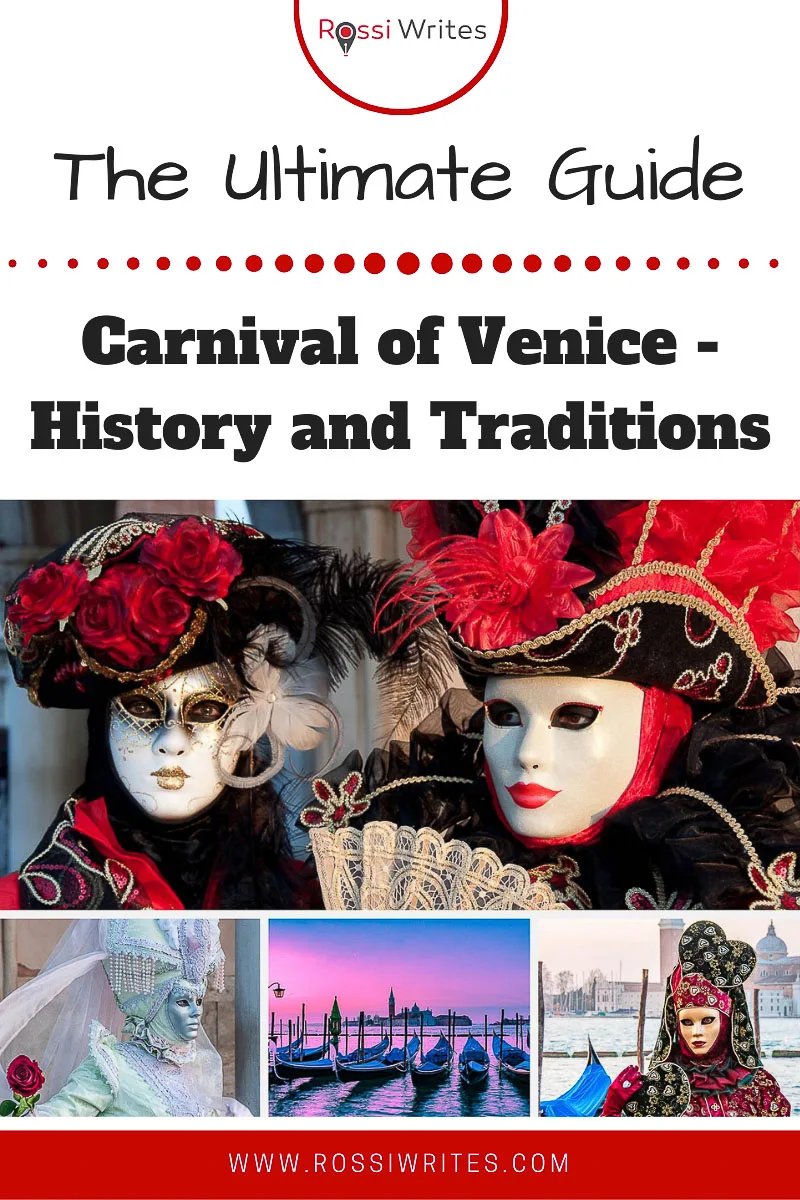

Blanche
Friday 19th of February 2021
Very interesting to read the history of Carnival of Venice. Thanks
admin
Thursday 25th of February 2021
Thank you! I'm glad you found it of interest. Best wishes,
Rossi :)